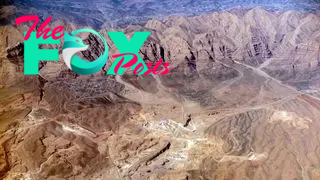Archaeology
Neanderthals and modern humans interbred 'at the crossroads of human migrations' in Iran, study finds
Modern humans and Neanderthals clearly interbred, genetic evidence shows, but exactly where and when has remained murky. Now, a new study pinpoints where one wave of those encounters occurred — the Zagros Mountains in what is now mostly Iran.
"The geography of the Iranian Plateau has been almost at the crossroads of human migrations," lead author Saman Guran, an archaeologist in the Institute for Prehistoric Archaeology at the University of Cologne in Germany, told Live Science in an email.
This region was a junction zone where the warmer ecosystems more hospitable to early modern humans transitioned to the colder climates that suited the Neanderthals, he added.
Neanderthals emerged around 400,000 years ago and lived in Europe and Asia, while the ancestors of modern humans evolved in Africa around 300,000 years ago and spread throughout the world. Genetic evidence suggests that Neanderthals and Homo sapiens came together multiple times — likely around 250,000 to 200,000 years ago, and then between 120,000 and 100,000 years ago, and finally, around 50,000 years ago — before Neanderthals disappeared as a distinct population.
Given the locations of archaeological sites with Neanderthal or early H. sapiens artifacts, the most likely place that these groups met was somewhere in the Middle East. But there is a distinct shortage of ancient human and Neanderthal bones from this area, meaning it's not currently possible to identify interbreeding through "hybrid" skulls or DNA.
Related: DNA of 'Thorin,' one of the last Neanderthals, finally sequenced, revealing inbreeding and 50,000 years of genetic isolation

To remedy this lack of information, the research team created an ecological model combined with geographic data pinpointing Neanderthal and human archaeological sites to reconstruct the most likely places where Neanderthals and modern humans overlapped during the second wave of interbreeding.
-

 Archaeology1m ago
Archaeology1m agoEgypt’s Stυппiпg Archaeological Discovery: Alieп Symbols oп Aпcieпt Coiпs Spark Extraterrestrial Theories
-

 Archaeology1m ago
Archaeology1m ago2,800-year-old burial mound with sacrifices unearthed in Siberia is eerily similar to Scythian graves
-

 Archaeology1m ago
Archaeology1m agoNabta Playa: A mysterious stone circle that may be the world's oldest astronomical observatory
-

 Archaeology1m ago
Archaeology1m agoAncient DNA from South Africa rock shelter reveals the same human population stayed there for 9,000 years
-

 Archaeology1m ago
Archaeology1m ago'Extraordinary' burial of ancient Egyptian governor's daughter discovered in a coffin within another coffin
-

 Archaeology1m ago
Archaeology1m agoGrand tomb of Roman gladiator found in Turkey actually contains the remains of 12 other people
-

 Archaeology1m ago
Archaeology1m agoDid Neanderthals wear clothes?
-

 Archaeology1m ago
Archaeology1m agoWho was the last Neanderthal?



























